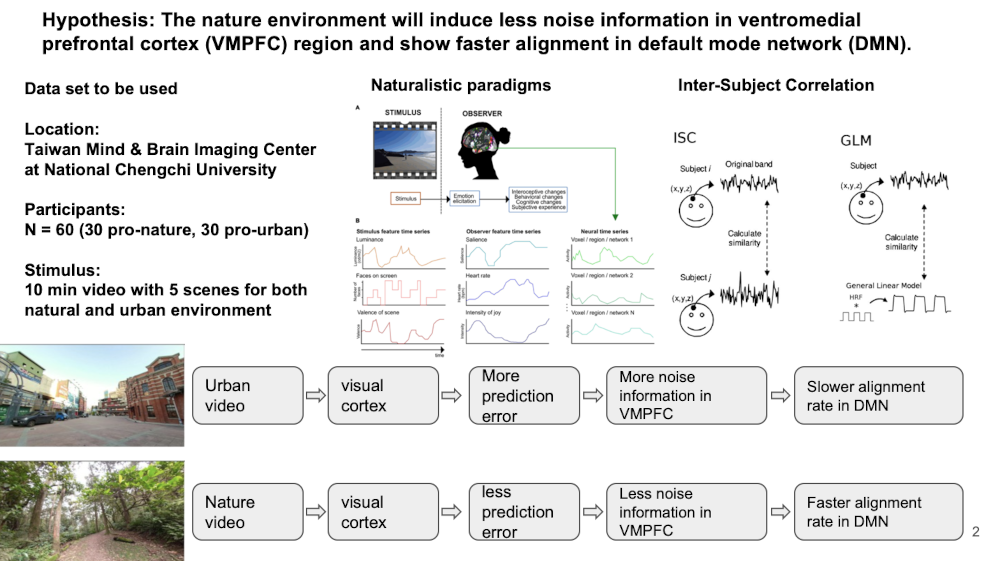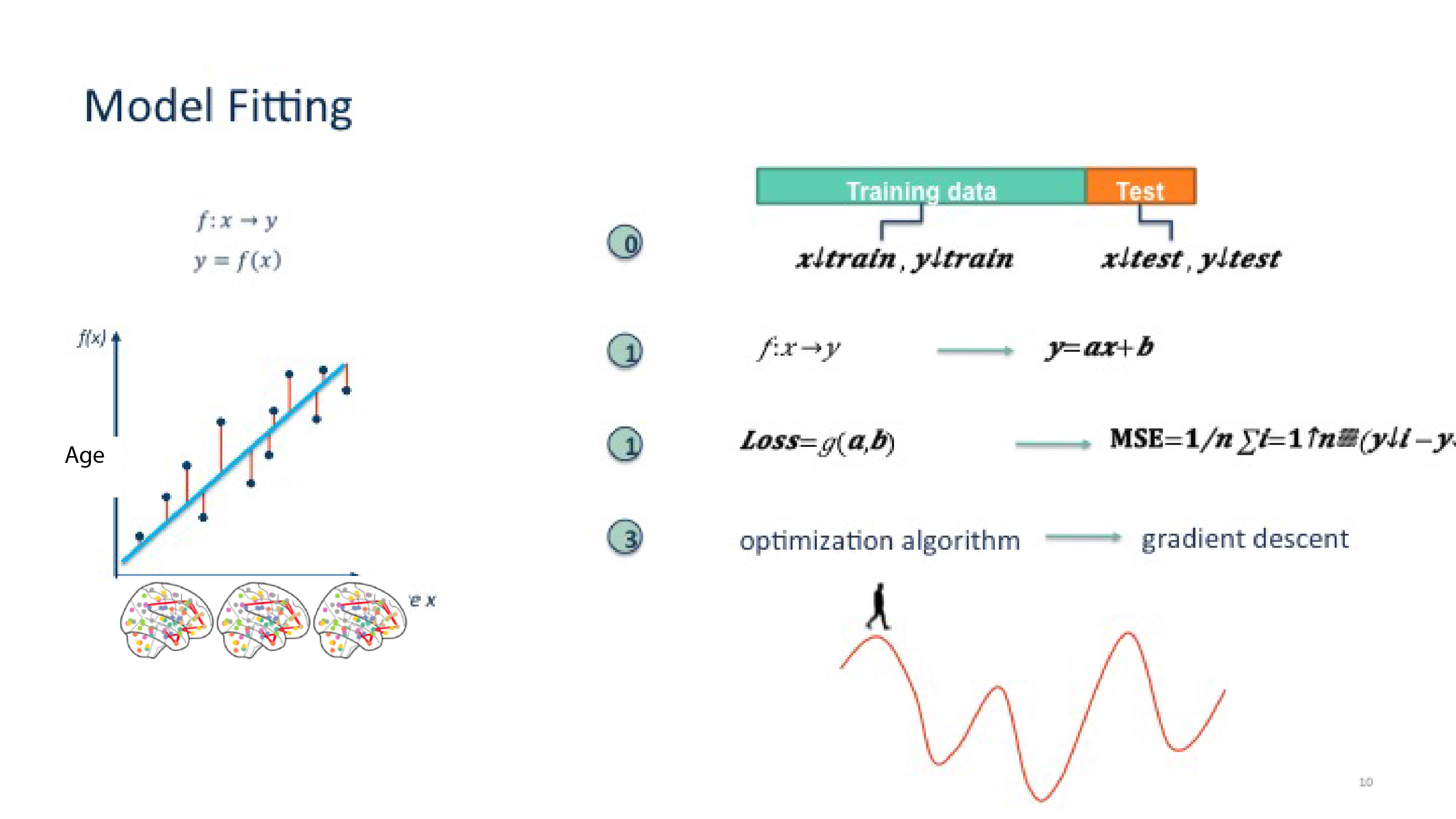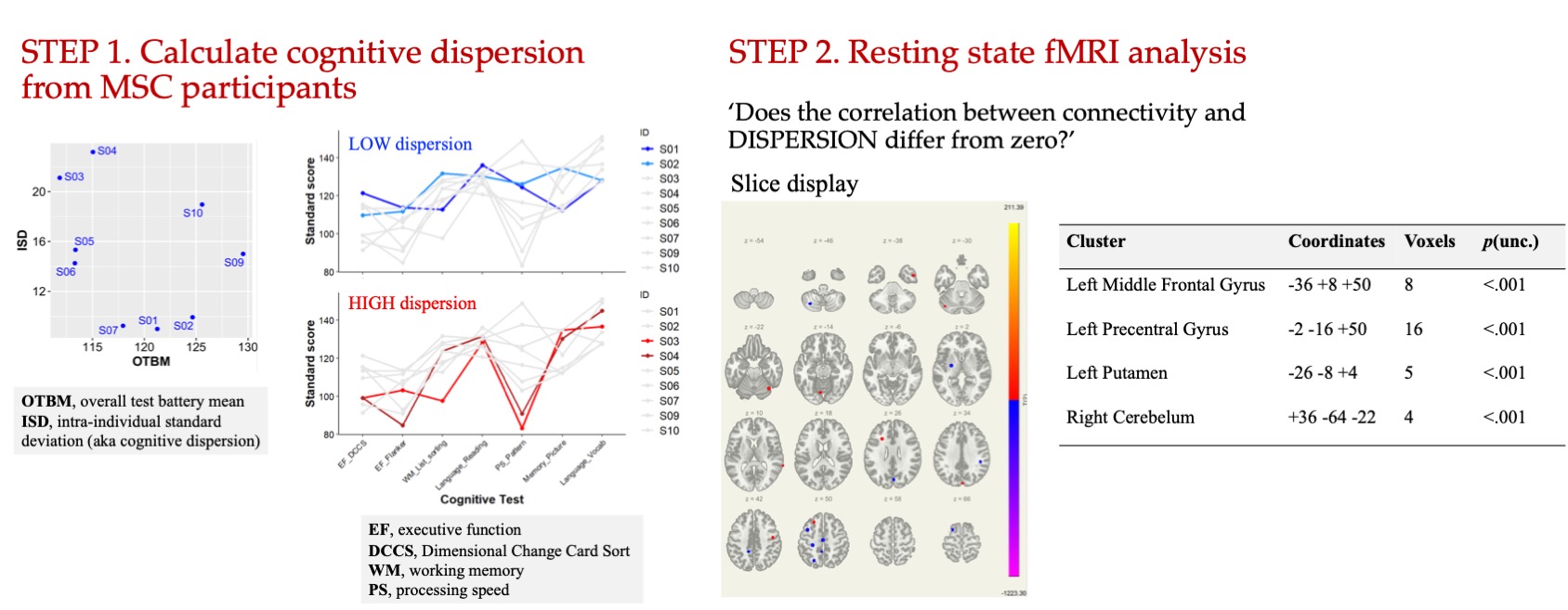
The Neural mechanism of Nature-based intervention with Environmental information of Forest
By Chun-Yi, & Lee
Published on June 9, 2023
June 9, 2023

Project definition
Background
Increasingly, research has shown that Nature-Based Interventions (NBIs) have positive effects on cognitive function and mental health. One study showed that participants who walked through an arboretum performed significantly better on memory and directed attention tasks, and increased positive affect more than did an urban-walking group. However, the different environmental preferences of individuals might moderate or confound the cognitive benefits of NBIs. It also remains unclear what specific mechanisms might link the neural processing of environmental information with cognitive benefits.
Tools
The “The Neural mechanism of Nature-based intervention with Environmental information of Forest” project will rely on the following technologies:
- HeuDiConv for BIDS
- fMRIPrep for preprocessing
- Pliers package for automated feature extraction
Data
Self-recruiting project Location: Taiwan Mind & Brain Imaging Center at National Chengchi University Participants: N = 60 (30 pro-nature, 30 pro-urban) Stimulus: 10 min video with 5 scenes for both natural and urban environment
Deliverables
At the end of this project, we will have:
- Analyze workflow for BIDS conversion and fMRIPrep
- Code script for Naturalistic paradigm analysis
Results
Progress overview
The project was swiftly initiated by Chun-Yi Lee, about the naturalistic paradigm and nature-based intervention.
Tools I learned during this project
- HeuDiConv for BIDS
- fMRIPrep for preprocessing
- Pliers package for automated feature extraction
Results
Deliverable: results
- Convert the raw dicom files into BIDS format by HeuDiConv tools
- Create a container in server to isolate the process and manage packages
- Preprocessed the nifti files with fMRIPrep as a Robust Preprocessing Pipeline for fMRI Data
- Try to automated extract the features from environment stimuli with pliers package
- Try to analyze the whole brain Intersubject Correlation and Functional Alignment between different participants with certain environmental preference
Conclusion and acknowledgement
I would like to thank the Brain Hack School 2023 for organizing this course and for their support. The course has been highly beneficial, and I would like to express my appreciation to organizer and TA for all your support!
References
- Kuperman, V., Stadthagen-Gonzalez, H. & Brysbaert, M. Age-of-acquisition ratings for 30,000 English words. Behav Res 44, 978–990 (2012). https://doi.org/10.3758/s13428-012-0210-4
- Warriner, A.B., Kuperman, V. & Brysbaert, M. Norms of valence, arousal, and dominance for 13,915 English lemmas. Behav Res 45, 1191–1207 (2013). https://doi.org/10.3758/s13428-012-0314-x
- Glerean, E., Salmi, J., Lahnakoski, J. M., Jääskeläinen, I. P., and Sams, M. (2012). Functional Magnetic Resonance Imaging Phase Synchronization as a Measure of Dynamic Functional Connectivity. Brain Connect. 2, 91–101. doi:10.1089/brain.2011.0068.
- Nastase, S. A., Gazzola, V., Hasson, U., & Keysers, C. (2019). Measuring shared responses across subjects using intersubject correlation. Social Cognitive and Affective Neuroscience, Volume 14, Issue 6, June 2019, Pages 667–685, https://doi.org/10.1093/scan/nsz037
- Nummenmaa, L., Lahnakoski, J. M., and Glerean, E. (2018). Sharing the social world via intersubject neural synchronisation. Curr. Opin. Psychol. 24. doi:10.1016/j.copsyc.2018.02.021.
- Simony, E., Honey, C. J., Chen, J., Lositsky, O., Yeshurun, Y., Wiesel, A., et al. (2016). Dynamic reconfiguration of the default mode network during narrative comprehension. Nat. Commun. 7. doi:10.1038/ncomms12141.


